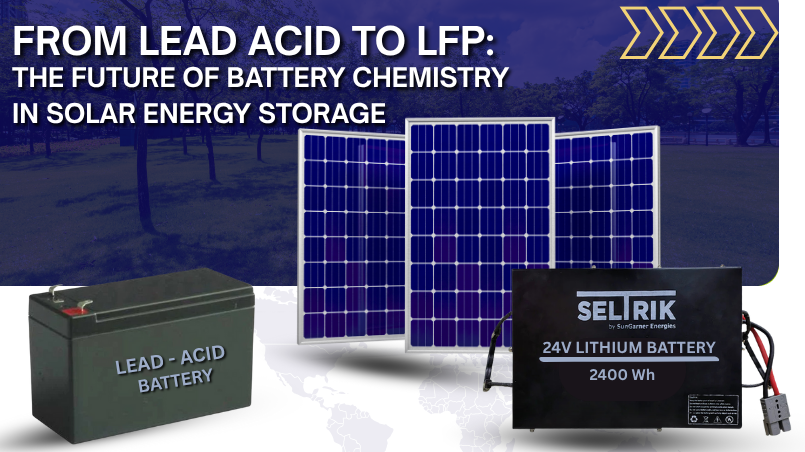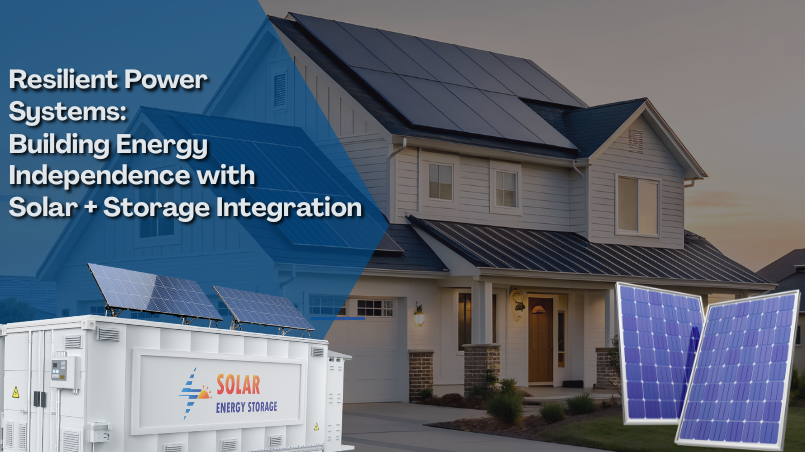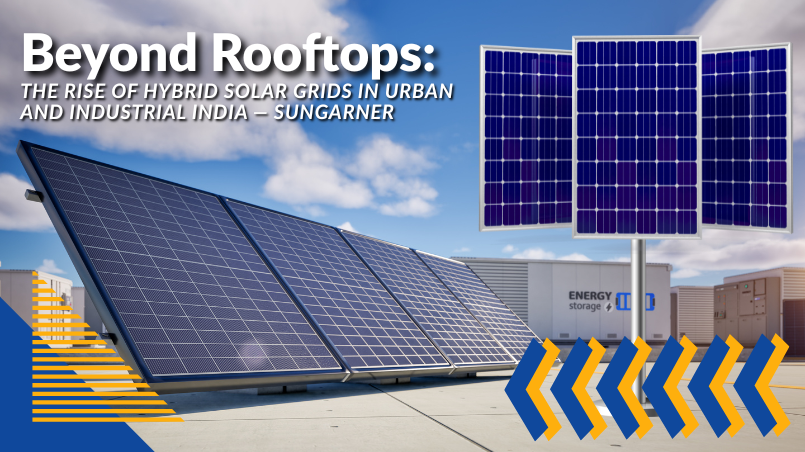From Lead Acid to LFP: The Future of Battery Chemistry in Solar Energy Storage
In 2025, this transition from lead acid to LFP represents not just an upgrade in battery technology — but a leap toward the future of sustainable energy storage.....
As the world shifts toward cleaner and more reliable energy systems, solar power has emerged as one of the most sustainable solutions. But solar energy alone isn’t enough — it needs efficient storage to balance generation and usage. This is where battery chemistry plays a transformative role.
For decades, lead-acid batteries dominated the solar storage space. They were cost-effective, simple, and easy to deploy. However, with the rapid growth of solar installations in homes, industries, and smart cities, the need for more efficient, longer-lasting, and safer batteries led to the rise of Lithium Iron Phosphate (LFP) technology.
In 2025, this transition from lead acid to LFP represents not just an upgrade in battery technology — but a leap toward the future of sustainable energy storage.
Why Lead-Acid Batteries Are Losing Ground
Lead-acid batteries were once the default choice for solar energy systems. They were affordable, recyclable, and familiar to installers. However, as the energy landscape evolved, their limitations became evident:
* Short lifespan: Typically lasts 3–5 years, with reduced performance under deep discharge conditions.
* Maintenance-heavy: Requires regular water topping and equalization cycles.
* Low energy density: Bulky for the amount of power they can store.
* Temperature sensitivity: Efficiency drops sharply in high or low temperatures.
These factors made them less suitable for modern solar storage systems, where users demand compact, high-performing, and maintenance-free solutions.
Enter LFP Batteries: The New Era of Solar Energy Storage
LFP (Lithium Iron Phosphate) batteries, a type of lithium-ion chemistry, are revolutionizing the energy storage sector. Known for their safety, stability, and longevity, they are fast becoming the preferred choice for solar applications across residential, commercial, and industrial projects.
Here’s why LFP batteries are changing the game:
1. Longer Lifespan: Can last up to 10–15 years with over 4000–6000 charge cycles.
2. Higher Efficiency: Offers a round-trip efficiency of 95%, compared to 80–85% for lead-acid.
3. Zero Maintenance: No topping up, corrosion, or sulfation issues.
4. Compact and Lightweight: Ideal for rooftop and hybrid solar setups.
5. Enhanced Safety: LFP chemistry is thermally stable and resistant to fire or explosion risks.
This combination of performance, safety, and sustainability is why SunGarner and other forward-thinking solar solution providers are moving decisively toward LFP battery systems in 2025.
Industry Trends: How LFP Is Powering the Solar Revolution
The adoption of LFP technology aligns with several global and Indian solar industry trends that are reshaping the way we think about energy:
* Decentralized Energy Systems: With more homeowners and businesses installing solar + storage setups, compact and smart LFP batteries enable true energy independence.
* Electric Mobility Integration: The synergy between EV charging and solar power is pushing the demand for shared LFP battery storage infrastructure.
* Government Push for Sustainability: India’s renewable energy roadmap emphasizes greener, longer-lasting battery technologies — and LFP perfectly fits the bill.
* Falling Prices: As LFP manufacturing scales globally, costs are dropping by nearly 15–20% year-over-year, making it more accessible.
* Recycling and Circular Economy: LFP cells are more environmentally friendly and easier to recycle than other lithium-based chemistries.
In short, LFP isn’t just a technological choice — it’s a sustainability commitment.
Best Practices in Battery Manufacturing and Deployment
To ensure long-term performance and safety, leading solar companies follow a few essential best practices:
* Precision Manufacturing: Ensuring uniform electrode coating and consistent cell balancing.
* Battery Management Systems (BMS): Advanced BMS monitors voltage, temperature, and charge cycles to prevent overcharging and optimize life.
* Thermal Management: Proper cooling and ventilation maintain stable battery performance in varying climates.
* Modular Design: Allows easy scalability — from small residential setups to industrial-grade energy storage systems.
* Compliance and Testing: Certified as per IEC, BIS, and ISO standards for quality assurance.
At SunGarner, we integrate these practices across all our solar battery solutions, ensuring every product meets the highest global standards for performance and safety.
Market Insights for 2025
The global LFP battery market is projected to cross $70 billion by 2030, with India emerging as a major growth driver. With the government’s focus on solar capacity expansion and energy independence, the shift toward LFP batteries will only accelerate.
Industries, commercial complexes, and smart cities are also exploring hybrid energy storage models, combining solar, wind, and battery systems for uninterrupted power.
SunGarner is at the forefront of this transformation — helping businesses and communities transition from legacy lead-acid systems to modern LFP-based solar storage solutions that are future-ready and eco-conscious.
Conclusion
The journey from lead-acid to LFP represents more than a change in battery chemistry — it’s the evolution of how we store and use renewable energy. In a world moving toward sustainability and efficiency, LFP batteries are the natural choice for solar energy storage.
As technology matures and costs continue to fall, LFP systems are set to become the new standard — delivering reliability, safety, and performance that lead-acid batteries simply can’t match.
At SunGarner, we believe the future of solar energy lies in smart storage — and with LFP technology, that future is already here.
FAQs
1. What makes LFP batteries better than lead-acid batteries for solar storage?
Ans: LFP batteries offer higher efficiency, longer lifespan, zero maintenance, and greater safety, making them ideal for modern solar systems.
2. How long do LFP batteries last in solar applications?
Ans: Typically, LFP batteries last 10–15 years or more, depending on usage and maintenance conditions.
3. Are LFP batteries suitable for both residential and industrial solar setups?
Ans: Yes, LFP batteries are scalable and can be used for homes, factories, farms, and large solar energy storage systems.
4. Do LFP batteries require special maintenance?
Ans: No. Unlike lead-acid batteries, LFP batteries are maintenance-free and monitored automatically through advanced BMS technology.
5. Why should I choose SunGarner for my solar energy storage needs?
Ans: SunGarner offers cutting-edge LFP battery solutions backed by innovation, quality, and industry expertise, ensuring reliable and sustainable solar power for every application.








